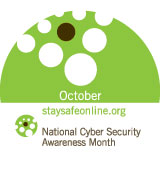The Consumer Sentinel Network Data Book 2010 was released March 8. CSN is a secure online database used by law enforcement to investigate fraud. Besides the FTC, complaints are filed by organizations including the Internet Crime Complaint Center, Better Business Bureaus and U.S. Postal Inspection Service.
Some highlights from the FTC data:
• Government documents/benefits fraud is the most common and fastest-growing form of reported ID theft, with "tax and wage fraud" (stolen Social Security numbers) the issue in 15.5 percent of all cases.
• An increasing number of identity thieves will now use your stolen data to apply for government benefits, set up a bogus electronic fund transfer, open a utility account or get an Internet or email address.
• Credit card fraud - new accounts or stolen card numbers - has declined but still affects 15 percent of identity theft victims.
• Employment-related fraud (again, Social Security number theft) snared 11 percent of victims - and 8.6 percent of all ID theft victims didn't even know how their stolen info had been used.
• Fraud complaints continue to grow in both number (more than 725,000 last year) and dollars ($1.7 billion) in 2010. These thefts ran the gamut from bogus sweepstakes and counterfeit checks to illegal debt collection practices and deceptive satellite TV promotions.
• Email is still the No. 1 method by which fraudsters contact potential victims, and wire transfer the most effective way for them to get money out of victims.
• "Impostor fraud" is the fastest-growing scam out there. It affected more than 60,000 people in 2010, up from just five cases in 2008. Thieves who claim to be someone they're not - a friend stranded overseas, a bill collector or a government agency like the IRS - are using Facebook messages, email, phone calls and text messages to convince people to hand over money and personal info.
• The economic impact of ID theft is huge. A separate study done by Harris Interactive shows the toll ID theft takes on its victims. Those who don't use an identity theft protection service spent 86 hours untangling the mess over more than 20 weeks, and lost an average of more than $1,100.
So, after all that, you may be surprised to hear that ID theft cases reported to the FTC have decreased in the last two years, from a high of more than 314,000 in 2008. Why? Are people actually listening to those of us who continue to raise awareness to the effects of this ever-evolving crime? Are consumers being more careful with their personal information? Are today's proactive identity theft protection services working? Could it be that consumers are taking the need to protect their information more seriously? I think "all of the above," but that doesn't mean we can slack off on our efforts to protect our data and hold companies accountable for doing the same.
It's important to note too, that though credit related fraud stats show a decline, the other more intrusive types of identity theft have risen. With today's criminals finding successful ways to use our personal info to file false tax returns, obtain jobs, medical services, access equity lines of credit, apply for government benefits, and commit other crimes, we would be unwise to overlook the value of today's more advanced identity theft protection options.
Thieves haven't left the building. Unfortunately, they've just found new ways to enter it. As technology has evolved, identity theft has too. ID theft criminals make it their job to utilize these advances to their advantage. We need to do the same. If not now: when?


 NEWSLETTER SIGN UP
NEWSLETTER SIGN UP SUBSCRIBE
SUBSCRIBE CONTACT
CONTACT

















Leave a comment